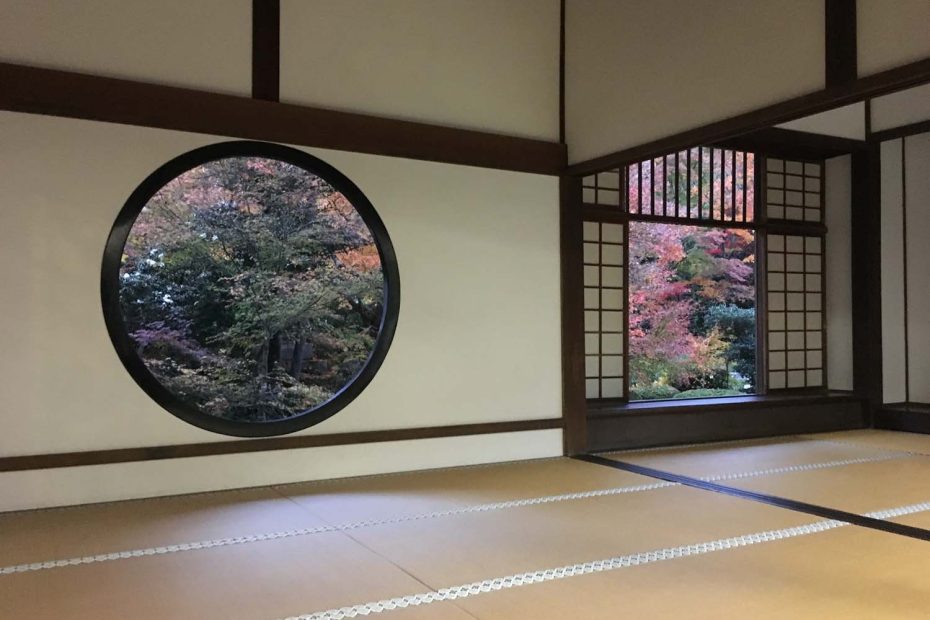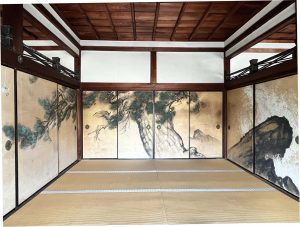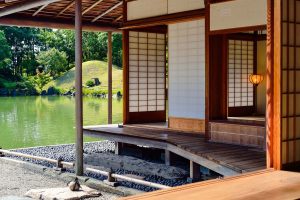Are you interested in learning how to decorate a traditional Japanese room?
In this article, Yukari Ishii, a Japanese artist living in Japan, introduces the Japanese way of decorating a traditional Japanese room and the Japanese spirit behind it.
A traditional Japanese room with a “tokonoma” (alcove) where people can display art and flowers, a “chigai-dana” (staggered wall shelves) where people place incense burners and other items, and a “jibukuro” (cupboard on the floor), is called a “zashiki” (a Japanese-style drawing room).
A sense of the seasons, modesty, an emphasis on “blank spaces,” and minimalism characterize the decorating style of the zashiki.
You can find a spirituality unique to Japanese at the base of the traditional Japanese room “zashiki” decorating style.
Let’s take a closer look.
☑Table of Contents
- What is a traditional Japanese room? Characteristics of “zashiki”
- Characteristics of traditional Japanese room “zashiki” decor
- Traditional Japanese room decor and the spirit of the Japanese people
- Items to decorating traditional Japanese room “zashiki” – calligraphy, paintings, flower arrangements
What is a traditional Japanese room? Characteristics of “zashiki”
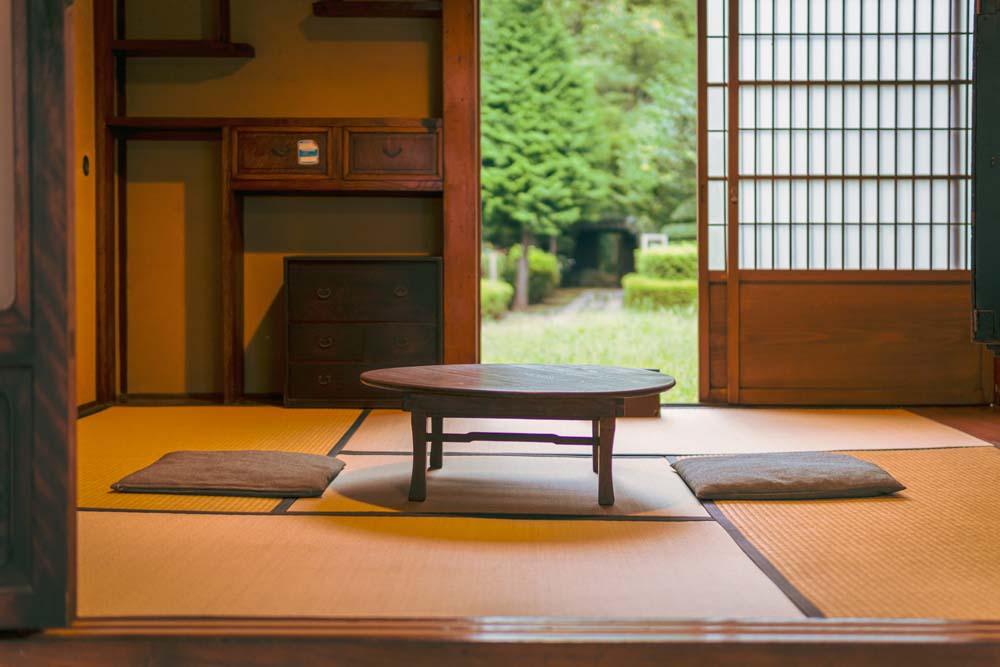
What is a traditional Japanese room?
A traditional Japanese room with an “tokonoma” (alcove) for displaying calligraphy, paintings, and “ikebana” (Japanese art of flower arrangement), a “chigai-dana” (staggered wall shelves) for placing incense burners and pots, and a “jibukuro” (cupboard set up on the floor), in front of the room is called a “zashiki” (a Japanese-style drawing room).
The tokonoma is a space one level higher than the tatami floor where Japanese people display “kakejiku” (traditional Japanese hanging scroll arts), flower arrangement, and ornaments.
Chigai-dana is located next to the tokonoma and is a decorative shelf with two shelves mounted on different levels.
A jibukuro is a low cupboard set in contact with the floor.
Now, let us introduce the features of a zashiki.
Features of “zashiki”

The zashiki has a simple design with a wooden ceiling, tatami floor, clay walls, and a sliding door made of wood or paper called a “shoji” or “fusuma”.
Japanese people have long been built houses using natural materials such as wood, plants, paper, and soil.
Japanese have been built houses using the materials of the land.
This is because Japan is a forest-rich country with forests accounting for 67% (2017 *) of its land.
(* Source: https://www.rinya.maff.go.jp/j/keikaku/genkyou/h29/1.html)
Traditional Japanese houses are sustainable.
This is because the buildings are made of materials that return to nature when buried in the soil, such as wood, paper, soil, and grass, even if they are torn down when rebuilt.
The ceilings, walls, and floors of the zashiki are muted colors: white, beige, brown, and black.
This is because zashiki are made with the colors of materials such as wood, paper, earth, and grass.
Japanese rooms are almost always these colors in all regions.
In Japanese style houses “minka” (private houses), the colors of the materials are often used.
But in some regions, colored soil is mixed with the soil for the walls, or the wood is coated with “urushi” (lacquer), “kakishibu” (persimmon tannin), or “bengara” (burnt ocher, red iron oxide).
Lacquer is the sap of the poison oak tree (lacquer tree).
Kakishibu is the fermented juice of the astringent persimmon fruit.
It adds color and at the same time makes the wood less susceptible to decay.
Bengara is a red pigment derived from soil.
For your reference, you can understand the purpose of sustainable art when reading the following article.
>> The Hidden Goal of Sustainable Art [Ultimately, Zero Waste]
Beauty of Zashiki And Japanese Garden
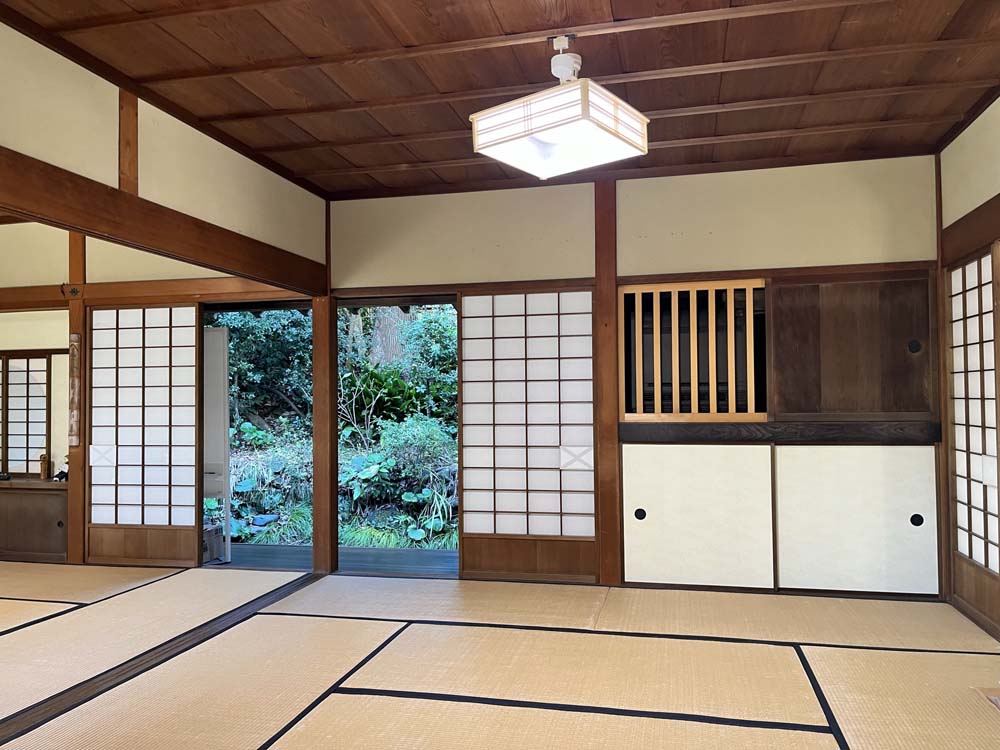
In addition, traditional zashiki always have a designed garden.
You can enjoy not only the interior design but also the exterior design in the zashiki.
So, the presence of a garden further enhances the value of a zashiki.
The garden is designed and has trees, shrubs, stones, and ponds.
When opening the sliding door of the room, the room and the garden become one and the same, and you can view the beautiful garden.
The garden changes its appearance depending on the season and time of day.
We have enjoyed looking at the garden and seeing its beauty change with the seasons and with the time of day: morning, noon, and evening.
“Shigitatsuan” is built by Oyodo-no-Michigaze (haiku poet) in 1765 in Oiso, Japan *.
The picture above is zashiki and garden of his house.
(Souce : https://www.nem-shiteikanri.jp/shisetsu/shigitatsuan/history/index.html)
Tatami Room
Do you have the impression that a traditional Japanese room is a tatami floor room?
Tatami is a floor covering with a straw core and a surface made of “igusa” (rush).
Straw is dried rice stalks after harvesting rice.
Japanese people lay tatami on a floor made of wooden boards.
The thickness of a tatami mat is about 2.16 inches (55 mm).
The size of a tatami mat is standardized.
People can create a room as large as “4.5 jo” (4.5 tatami mats room) or “6 jo” (6 tatami room) by laying out tatami of a fixed standard.
A soft tatami floor suits Japanese lifestyle, because Japanese people spend time without shoes inside the house.
Less Furniture and Objects
A characteristic of Japanese rooms is that there is little furniture.
There is little furniture in the room, because Japanese people store their things are in a closet, “oshiire”attached to the zashiki.
A “oshiire” is a closet in Japan.
In larger houses, people store most things in a separate storehouse and bring them out to the room only when they use.
If you would like to know the characteristics of Japanese houses, please read the following article.
>> Why Do Japanese Houses Have Paper Walls? 5 Japanese Answers
Characteristics of traditional Japanese room “zashiki” decor
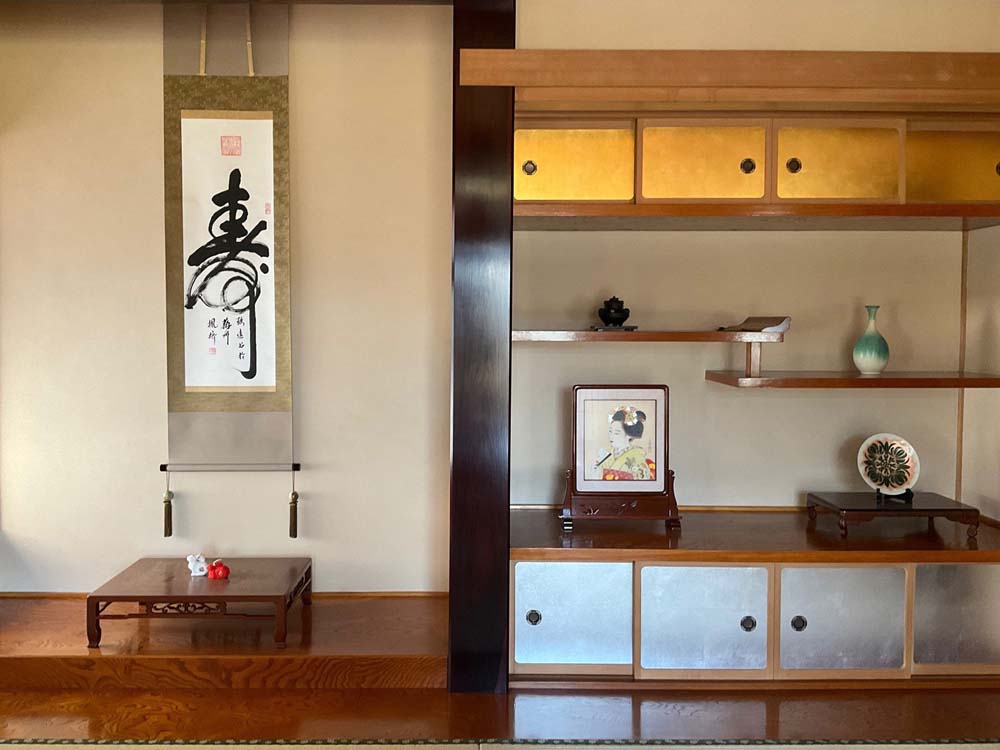
How to use “zashiki”?
You enter by taking off your shoes at the entryway in modern Japanese houses.
One enters through a door such as “Odo” (main door at the front of a house) into a dirt floor (beaten floor).
Then from the dirt floor, one takes off one’s shoes to enter a wooden or tatami room.
People in a high position enter the room directly from the “shikidai” (a step in a Japanese entryway), taking off their shoes.
The height of the zashiki table is low because people sit on cushions laid on the tatami floor.
The zashiki was originally used as a guest room.
The zashiki is used as a “drawing room” for entertaining guests and also as a “guest bedroom”.
When people use a zashiki as a “drawing room,” the upper seats are those located farther from the entrance of the room and closer to the tokonoma.
Guests and people in a high position sit with their backs to the tokonoma.
Therefore, visitors will sit on the seat closest to the tokonoma.
A zashiki is usually unfurnished.
Japanese peole place a “za-zukue” (low table) and “zabuton” (cushion) when entertaining guests, and lay out a futon for guests to sleep on.
A table is set out for meals one by one. (photo)
Traditional Japanese room, Zashiki decor
A way of decorating the room has developed to suit the low eye level when sitting down because of the sitting style in the zashiki.
It is characterized by hanging paintings and calligraphy on the walls of the tokonoma, and placing flower arrangements and decorative objects in a low position so that they look beautiful even when sitting.
How to Decorate a “Tokonoma” (Alcove) in a Zashiki
The tokonoma is generally a wooden floor that is one step up from the tatami floor.
But its height is as low as about 0 to 7.8 inches (0 to 20 cm).
Therefore, people can place flowers and decorations on the tokonoma at a height that is easy to view when sitting on the floor.
Usually, only one hanging scroll is displayed in one tokonoma.
Japanese people do not like to “over-decorate,” and it is considered beautiful to decorate a simple space in a modest manner..
The blank space on the walls around the hanging scrolls in the tokonoma is also an element of beauty in the room.
There are three types of alcove decorations “Shin-gyo-sou” (formal, semiformal, informal), in which we display hanging scrolls and flower arrangements according to the style.
“Shin-gyo-sou” (formal, semiformal, informal)
- “Shin” (formal) : a full-fledged style of decoration.
- “Sou” (informal) : a more relaxed style.
- “Gyo” (semiformal) : a style in between.
There are different styles of decorations such as hanging scrolls, vessels to display flowers, and their rugs depending on the “shin-gyo-so” style,.
The following picture is tokonoma of “sou” style in “haiku dojo (haiku training hall)” of “Shigitatsuan”.
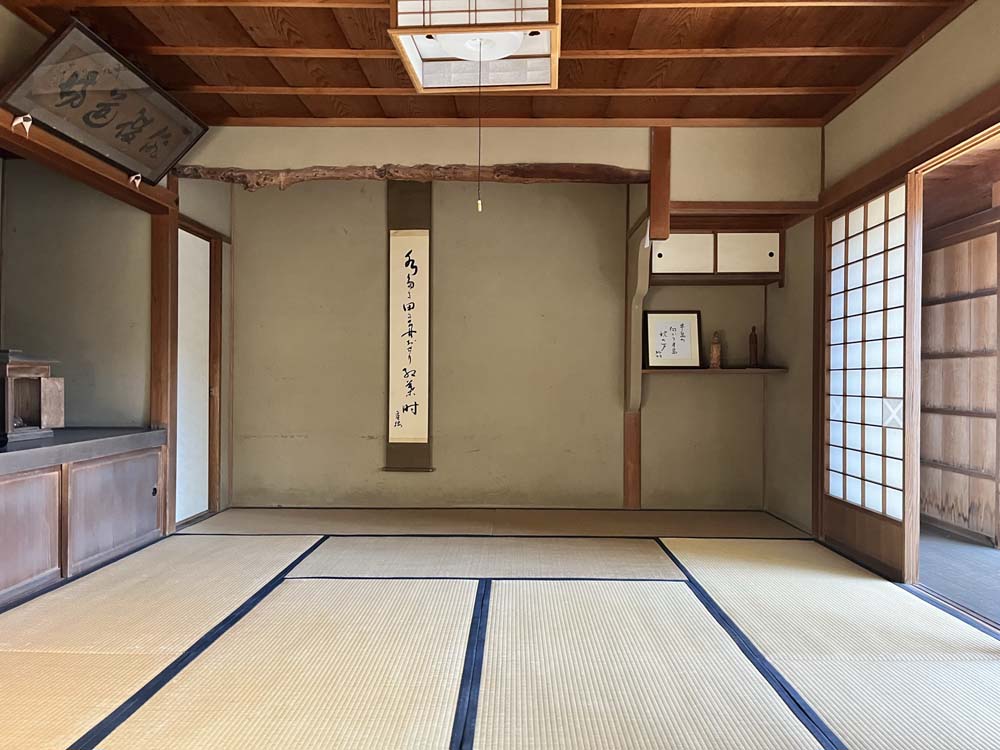
Traditional Japanese room decor and the spirit of the Japanese people
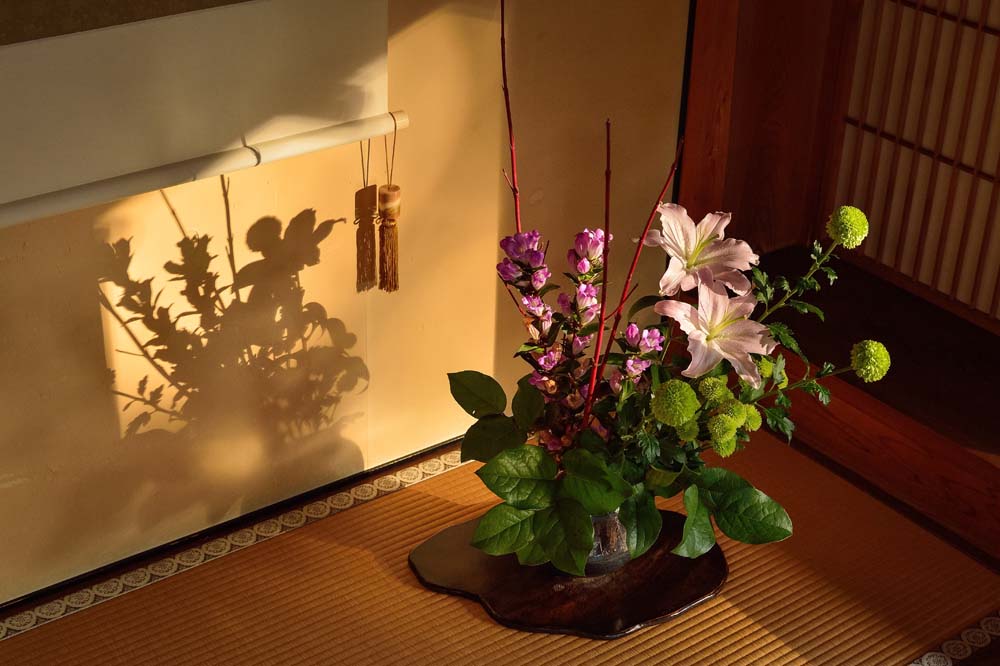
Japanese people use hanging scrolls and flower arrangements in the tokonoma (alcove) to express the seasons and to entertain guests in a traditional Japanese room, zashiki
You may feel that a traditional Japanese room is less “decorative” than a Western room (European and American room).
It is important not to decorate too much, to be modest, and to decorate with an awareness of “blank spaces” in Japanese-style rooms..
Decorate according to the seasons
In Japan, it is important to express the seasons of spring, summer, fall, and winter when decorating a room.
For example, we display a painting of “sakura” (cherry blossoms), a well-known Japanese art form in the spring season to create a space where one can feel the warmth of spring in the room.
In the fall, paintings depicting “koyo” (autumn leaves) are popular as art that lets viewers feel the season.
Japan is a country in the northern hemisphere and has four seasons.
Four seasons in Japan
- Spring : trees bud and flowers bloom.
- Summer : it is hot, rainy, and humid.
- Autumn : the trees turn red and the weather turns cool.
- Winter : the weather is cold and the air is clear.
A major theme of “decorating a tradtional Japanese room” is to create a space where people can feel the transition of nature in Japan.
One of the Japanese ways of hospitality is to decorate the room so that guests can feel the seasons.
For this reason, people arrange seasonal flowers in the tokonoma (alcove) and display seasonal hanging scrolls to create a space that evokes a sense of the season.
A hanging scrolls is generally an artwork with “calligraphy” or paintings on “washi” (Japanese paper).
Decorate according to the lunar calendar
Japan traditionally has a lunar calendar, which is based on the phases of the moon.
Originally, agriculture and zashiki decorations were based on the lunar calendar.
In Japan, spring is traditionally from January to March, summer from April to June, fall from July to September, and winter from October to December according to the lunar calendar.
Although it changes from year to year, the lunar calendar is generally dated approximately one month later than the solar calendar.
Leaving “blank spaces” creates beauty
The most significant characteristic of the Japanese way of decorating is the importance of “spacing” and leaving “blank spaces”.
Then, They carefully select a few nice things to display and enjoy the art along with the “blankness” of the walls and space around the things.
For this reason, in Japan, it is not considered a good idea to display a lot of things in a lot of places.
When decorating with art and flowers, people are very conscious of how to create a “blank space” around them.
This is because a beautifully balanced “space” leads to “beauty (aesthetic)” as the balance of the room as a whole.
In addition, Japanese people place importance on decorations that harmonize with the space of the room and that do not stand out too much.
Therefore, they choose decorations that fit in with the interior of the room and that match the ambience and taste of the room (i.e., whether the design is orthodox or a playful break from the mold).
Why is the Japanese style decorating room “minimalism” with fewer objects?
You may get the impression that the Japanese style decorating is more “minimalist” with fewer objects than the Western decorating style.
As the phrase “reading between the lines” suggests, there is a culture that values the space between objects and the atmosphere they create in Japan.
Therefore, Japanese express the beauty of the object including the space around it when decorating an object.
As in “the aesthetic of subtraction,” not over-decorating create beauty.
Items to decorating traditional Japanese room “zashiki” – calligraphy, paintings, flower arrangements
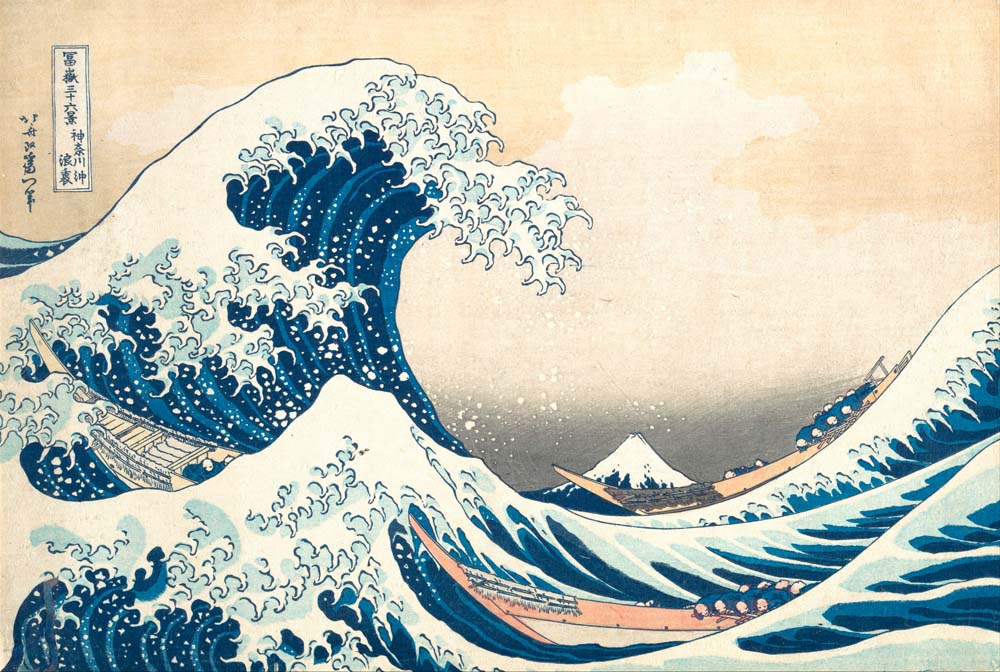
Traditional Japanese room, zashiki decor items
Let’s take a closer look at what Japanese people display in the zashiki.
You will come to understand the Japanese way of beauty by understanding the Japanese mind and the background of how they decorate calligraphy, paintings, and ikebana,.
What is “Sho” (calligraphy)?
“Calligraphy” is the expression of a message that a calligrapher wants to convey, expressed in Japanese “kanji” or “hiragana”.
Both kanji and hiragana are Japanese charactristics.
Calligraphy generally involves the use of a brush to draw kanji or other characters using a liquid “sumi” ink made of rubbed charcoal (ink stick) and water.
Calligraphy is an art form that appreciates the message depicted and the beauty of the characters.
We value the blank spaces where no characters are written.
You can sense not only the words of the message, but also the meaning of the message in the style, momentum, and rhythm of the letters. It is profound.
We pursue the way of being and the attitude of painting calligraphy in “Shodo” (Japanese calligraphy).
What is Traditional Japanese painting?

Traditional Japanese painting is an art form in which paintings are created on Japanese paper or silk using the pigments.
Pigment for Japanese painting is such as “gofun” (whiting) and “iwa-enogu” (natural mineral pigments).
Japanese often display a hanging scroll of a painting in the tokonoma of a zashiki.
I consider Japanese paintings to be arts that depict scenes with depth in a flat manner unlike Western paintings.
Ukiyoe (Japanese woodblock prints)
“Ukiyoe” (Japanese woodblock prints), as it is well known, is an art form that uses prints and paintings to depict landscapes, scenes from daily life, and notable figures such as “kabuki” actors.
Kabuki is a classical form of Japanese theater.
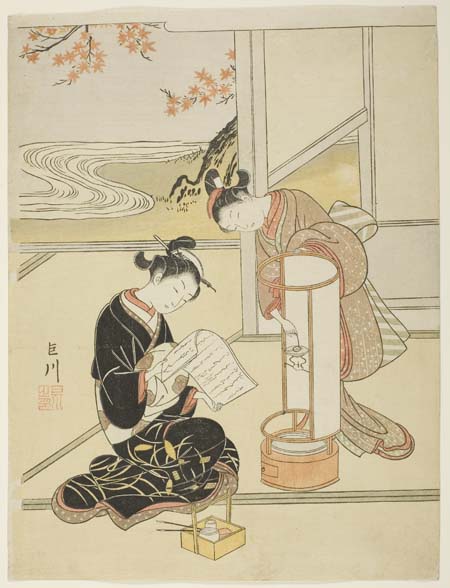
The detailed expression of Ukiyoe is similar to the drawing way pictures in “manga” (comic book).
Manga is a Japanese culture that is popular around the world.
Ukiyoe and manga show that the spirit and character of the Japanese people have been passed down through the ages.
For your reference, the article below describes in detail the value of paintings drawn by humans.
If you want to know the difference from the paintings drawn by AI, please take a look at it.
>> Human Art Value Different from AI-generated Art
What is “kado” (Japanese art of flower arrangement)?
There is an art of flower arranging called “kado” in Japan, .
Kado is a floral arrangement, but it values the “blankness” of space.
For this reason, you may get the impression that Japanese “ikebana” (flower arrangement) is more subdued than Western flower arranging.
When arranging flowers, we always decorate with a sense of the season in mind.
People place Flowers in flower baskets made of bamboo etc. and hang on pillars in the “cha-shitsu” (tea ceremony room).
A cha-shitsu is a room designed for inviting guests and entertaining them with tea, sweets, and meals.
Toko-bashira (alcove post)
The “toko-bashira” is one of the decorative elements of the Japanese tokonoma (alcove).
Therefore, the toko-bashira is a post in the alcove that plays a very important role in shaping the alcove.
The most popular woods used for toko-bashira are cherry, red pine, and kobushi (Magnolia kobus) with bark, as well as unusual woods such as quarter-sawn sugi (Japanese cedar) and wrinkled sugi (this is called “shibo”).
The impression of the alcove will vary greatly depending on the type of wood used and the shape of the design.
Toko-bashira have played a role in making the alcove look beautiful and deepening the flavor of the alcove.
A traditional Japanese room decor and its “beauty” has its origin in the unique Japanese sensibility and view of nature.
We hope you visit Japan and spend some time in a real “zashiki” room.
If you would like to know art of the Japanese room , please see the following article.
New Arrivals
-
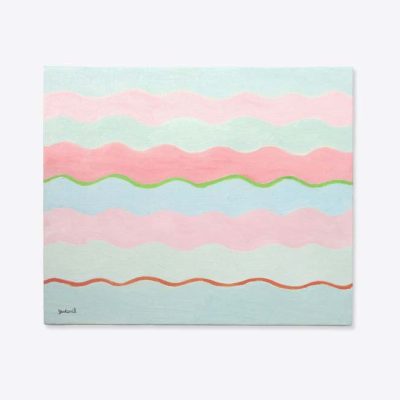 Gentle Flow$1,705.00
Gentle Flow$1,705.00 -
 Go Into The Light$1,364.00
Go Into The Light$1,364.00 -
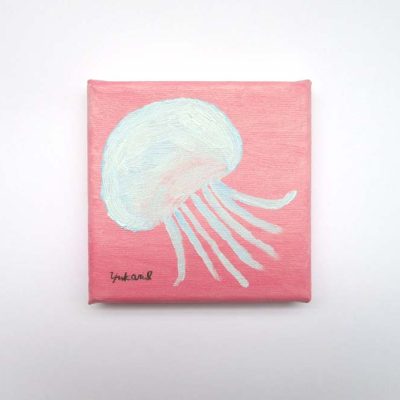 Jellyfish Dream$616.00
Jellyfish Dream$616.00
